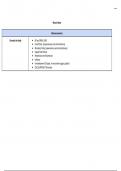Summary
Summary IB HL Macro Economics notes
- Course
- Economics
- Institution
- 12th Grade
This document contains notes on aggregate demand, aggregate supply, fiscal and monetary policy, supply side policies, the neoclassical and Keynesian model, inflation, unemployment and formulas.
[Show more]



